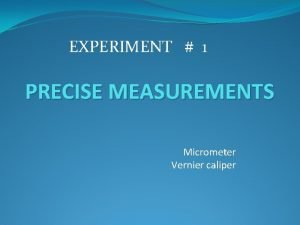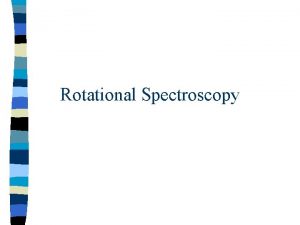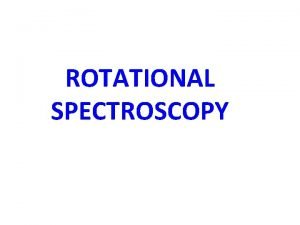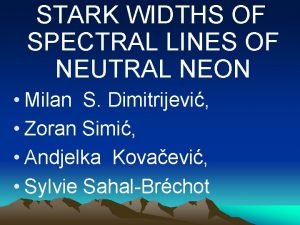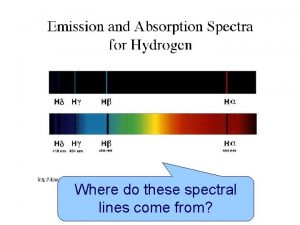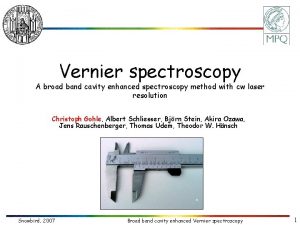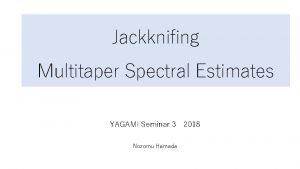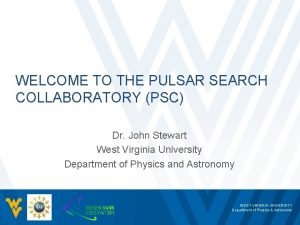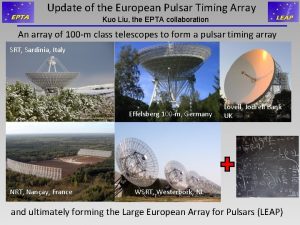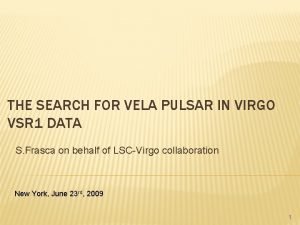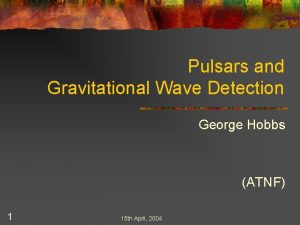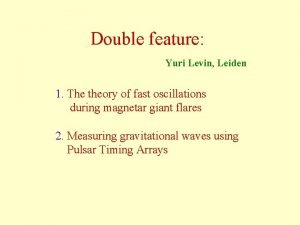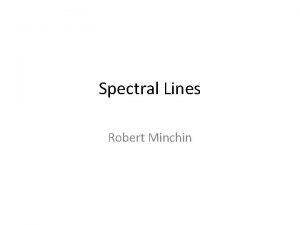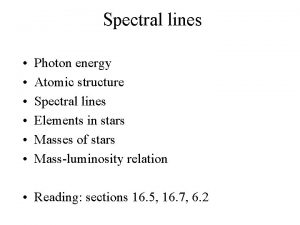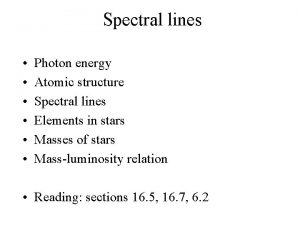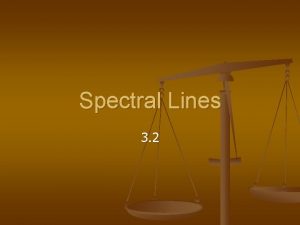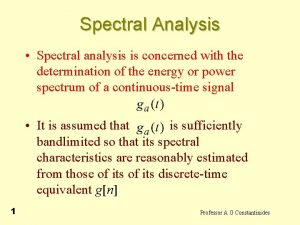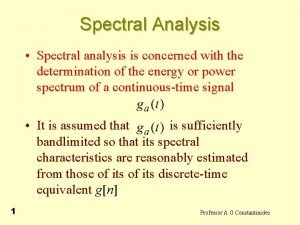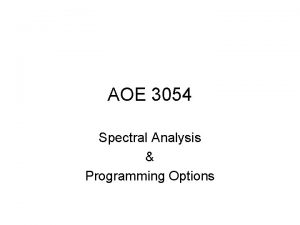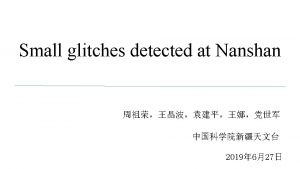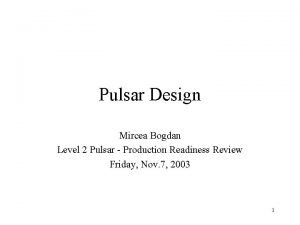Analysis of spectral lines in VSR 1 pulsar














- Slides: 14

Analysis of spectral lines in VSR 1 pulsar search F. Antonucci, P. Astone, S. D’Antonio , S. Frasca, C. Palomba • Update on the analysis of VSR 1 data, focusing attention on the presence of spectral disturbances. • More data more details can be seen • We are interested in identifying disturbances of clear or likely instrumental origin in order to remove them. This brings to a reduction in the number of candidates found in the analysis (and possibly allows for a reduction in the threshold for candidate selection). • Commissioning and noise people can be also interested. C. Palomba - DA Meeting 29 -12008 1

The analysis/cleaning of the spectral disturbances is done at the level of peak maps. We will also see how they reflect in candidate distribution The peak map is built from the ratio between periodograms and the corresponding estimations of the average spectrum, selecting local maxima above a given threshold We look at the frequency distribution of peaks Scheme of the DA pipeline calibrated data Data quality SFDB Average spect rum estimation peak map hough transf. candidates coincidences candidates coherent step events 2

persistency • Three main categories of disturbances: - ‘known’ Virgo lines (i. e present in the list); - lines of likely instrumental origin (mainly harmonics of a set of frequencies); - lines of unknown origin. 3

Some examples of ‘known’ Virgo lines Mainly violin modes and calibration lines 4

. 584 Hz . 29 -. 3 Hz 1. 75 -1. 76 Hz • Small disturbances ‘accumulates’ in time and clearly emerges in the total peak frequency distribution • Details not visible looking at a few days of data 5

. 585 Hz. 285 -. 3 Hz 1. 745 -1. 76 -1. 8 Hz. 2 Hz 1. 0 Hz 6

Harmonics of 0. 333 Hz: up to ~60 Hz (sidebands of 1 Hz lines? ) 1. 0 Hz: up to ~200 Hz 2. 6314 Hz: mainly in the ranges 315 -355 Hz, 560 -589 Hz, 602 -621 Hz, 805 -828 Hz 2. 6316 Hz: mainly in the range 240 -290 Hz 10 Hz: nearly everywhere in 0 -2 k. Hz (but with decreasing persistency) 12. 2782 Hz 19. 2309 Hz: 55 harmonics spread over the whole band 38. 728 Hz 41. 6179 Hz 180. 5489 Hz 7

• Even after removing lines from the Virgo known line list, there are residual disturbances 8

• This happens because lines with rather small amplitude are not detected by the line monitor, but if they are persistent enough we anyway find them in the peak frequency distribution. • Then, a further cut has been applied at the level of each peakmap, but still there are small but clear residuals in the total peak map, which produce candidate excess. 9

124. 82 -128. 02 Hz ~1171 Hz (4 lines) 64. 02 Hz 615. 95 Hz 165. 4 -165. 78 Hz 498. 8 Hz ~1726 Hz (triplet separated by. 596 Hz) 1953. 17 Hz 1504. 8 -1507. 6 Hz 1865. 4 Hz 382. 88 Hz residuals of violin modes residuals of 1 Hz and harmonics of 0. 5 Hz (not always present) 10

• Higher order violin modes have become visible BS 9 th order? BS 11 th order? 11

12

• Even a small peak excess can produce a large excess in the number of candidates. This is due to the fact that each disturbed frequency bin affects all the search frequency within a Doppler band range around it. 13

• Searching for non-zero spin-down candidates slightly reduces the effect of narrow disturbances Conclusions • Better cleaning by cutting bands around violin modes and calibration lines • Find lines to be cleaned on the total peak map histogram • Suggestions by commissioning/noise people very welcome 14
 Portal vsr
Portal vsr Vernier caliper using procedure
Vernier caliper using procedure Non rigid rotator
Non rigid rotator Application of rotational spectroscopy
Application of rotational spectroscopy Factors affecting width and intensity of spectral lines
Factors affecting width and intensity of spectral lines Neon spectral lines
Neon spectral lines Atomic spectral lines
Atomic spectral lines Vernier spectral analysis
Vernier spectral analysis Yagami doc
Yagami doc Pulsar search collaboratory
Pulsar search collaboratory Pulsar timing
Pulsar timing Vela pulsar
Vela pulsar Pulsar timing
Pulsar timing Pulsar timing
Pulsar timing Al pulsar el botón derecho del ratón generalmente
Al pulsar el botón derecho del ratón generalmente

